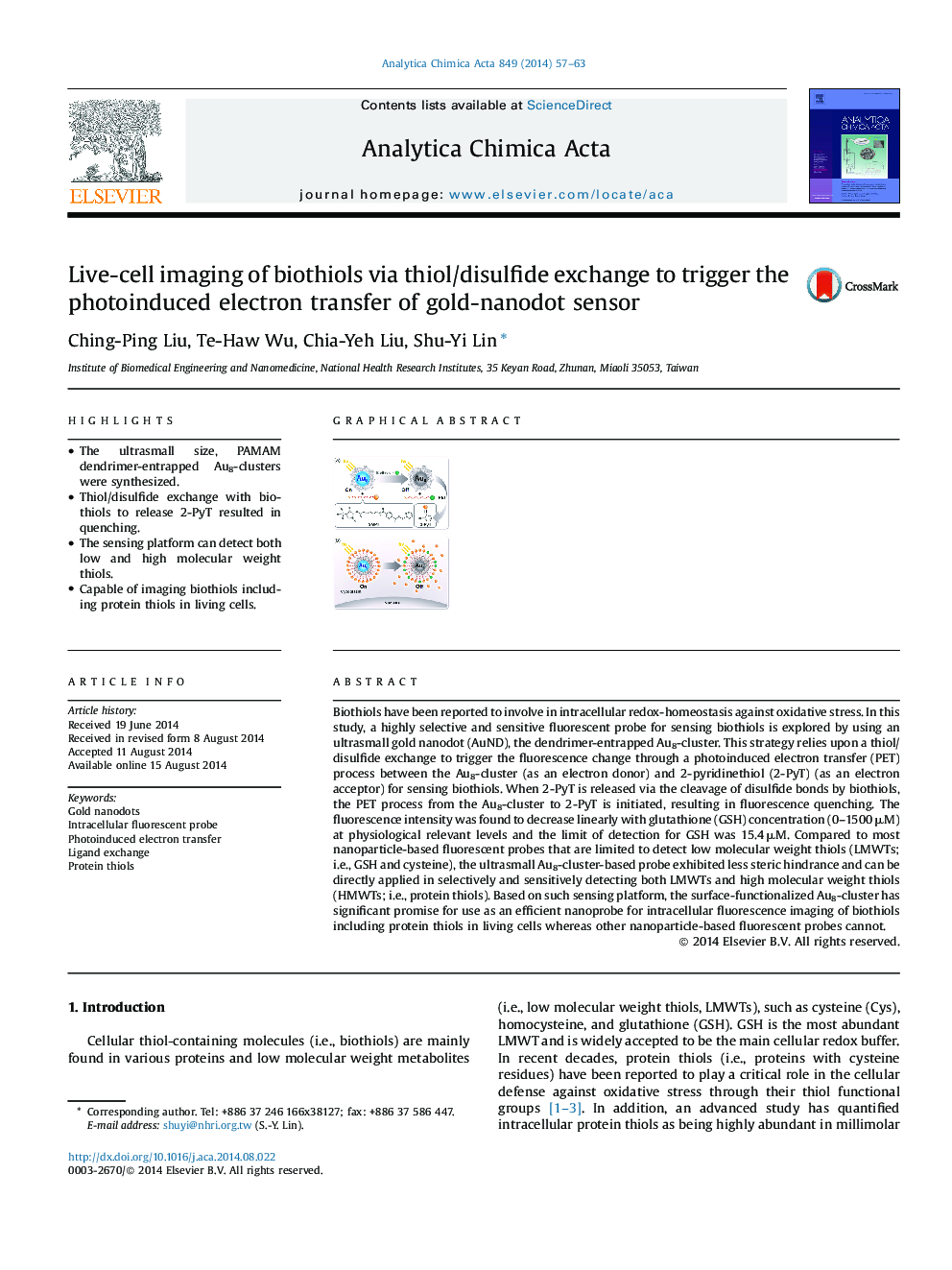| کد مقاله | کد نشریه | سال انتشار | مقاله انگلیسی | نسخه تمام متن |
|---|---|---|---|---|
| 1164248 | 1490983 | 2014 | 7 صفحه PDF | دانلود رایگان |
• The ultrasmall size, PAMAM dendrimer-entrapped Au8-clusters were synthesized.
• Thiol/disulfide exchange with biothiols to release 2-PyT resulted in quenching.
• The sensing platform can detect both low and high molecular weight thiols.
• Capable of imaging biothiols including protein thiols in living cells.
Biothiols have been reported to involve in intracellular redox-homeostasis against oxidative stress. In this study, a highly selective and sensitive fluorescent probe for sensing biothiols is explored by using an ultrasmall gold nanodot (AuND), the dendrimer-entrapped Au8-cluster. This strategy relies upon a thiol/disulfide exchange to trigger the fluorescence change through a photoinduced electron transfer (PET) process between the Au8-cluster (as an electron donor) and 2-pyridinethiol (2-PyT) (as an electron acceptor) for sensing biothiols. When 2-PyT is released via the cleavage of disulfide bonds by biothiols, the PET process from the Au8-cluster to 2-PyT is initiated, resulting in fluorescence quenching. The fluorescence intensity was found to decrease linearly with glutathione (GSH) concentration (0–1500 μM) at physiological relevant levels and the limit of detection for GSH was 15.4 μM. Compared to most nanoparticle-based fluorescent probes that are limited to detect low molecular weight thiols (LMWTs; i.e., GSH and cysteine), the ultrasmall Au8-cluster-based probe exhibited less steric hindrance and can be directly applied in selectively and sensitively detecting both LMWTs and high molecular weight thiols (HMWTs; i.e., protein thiols). Based on such sensing platform, the surface-functionalized Au8-cluster has significant promise for use as an efficient nanoprobe for intracellular fluorescence imaging of biothiols including protein thiols in living cells whereas other nanoparticle-based fluorescent probes cannot.
Figure optionsDownload as PowerPoint slide
Journal: Analytica Chimica Acta - Volume 849, 7 November 2014, Pages 57–63
